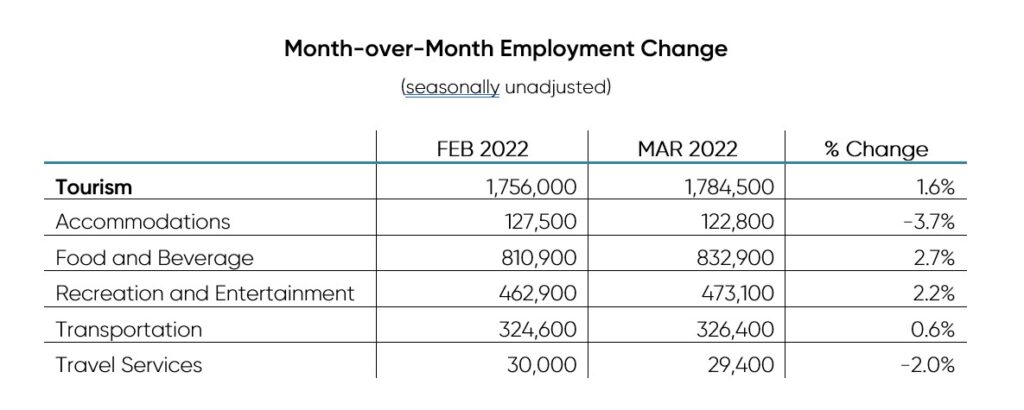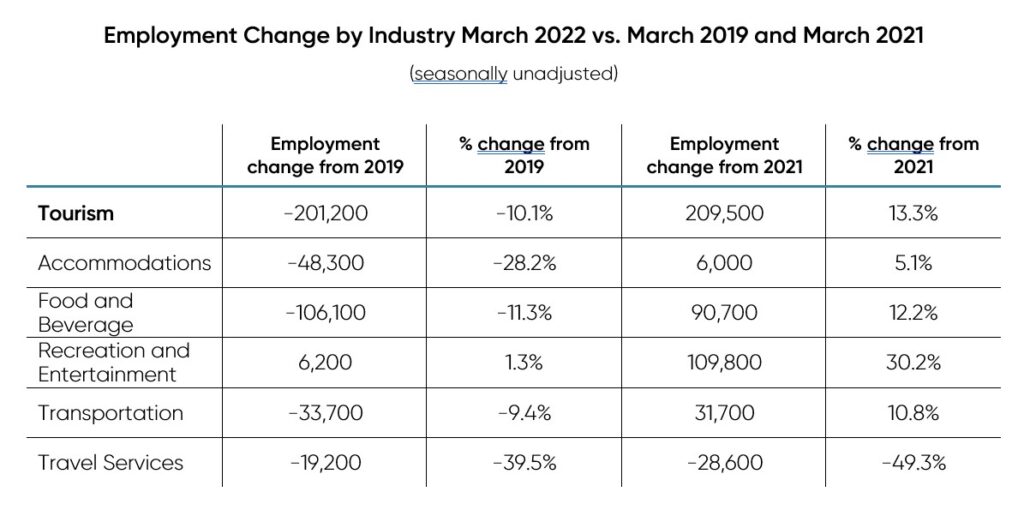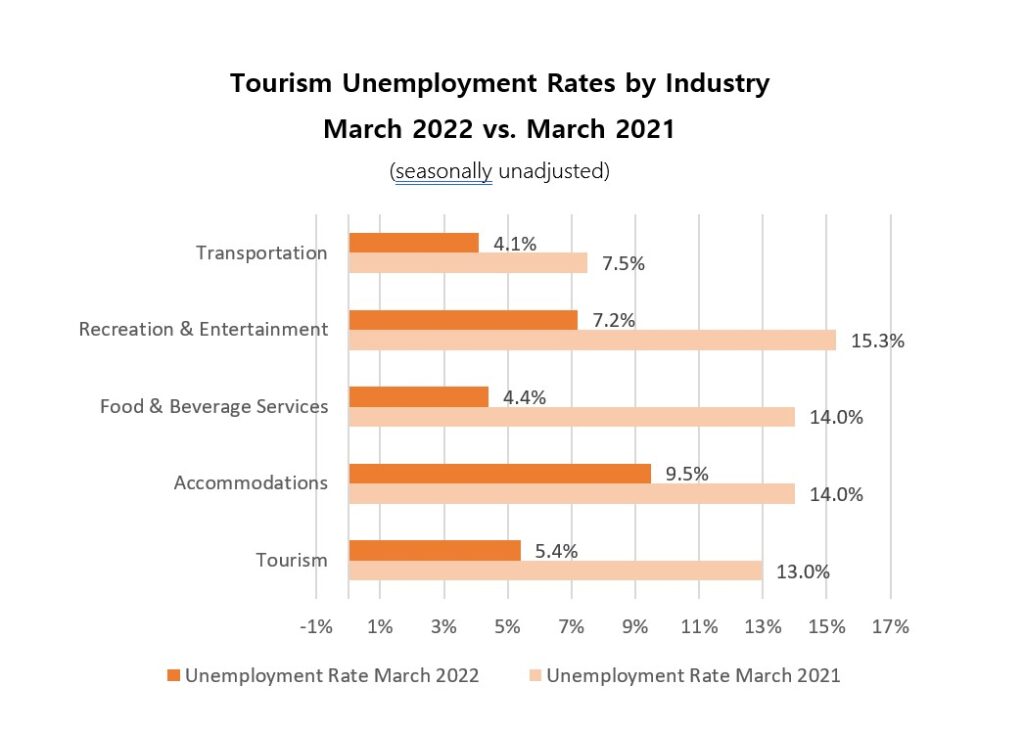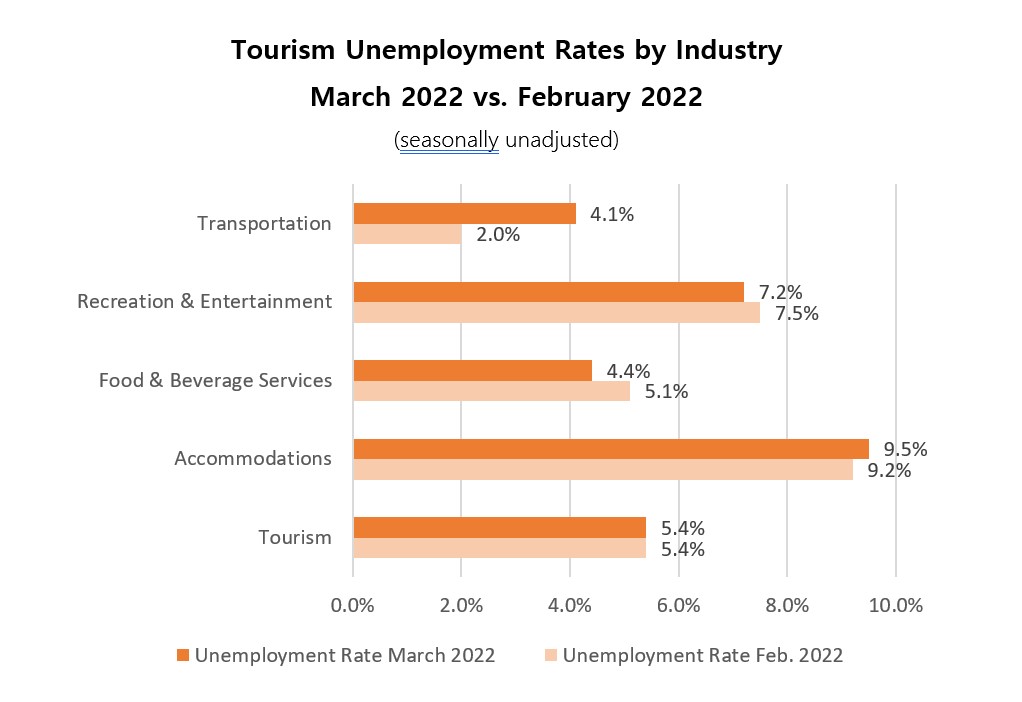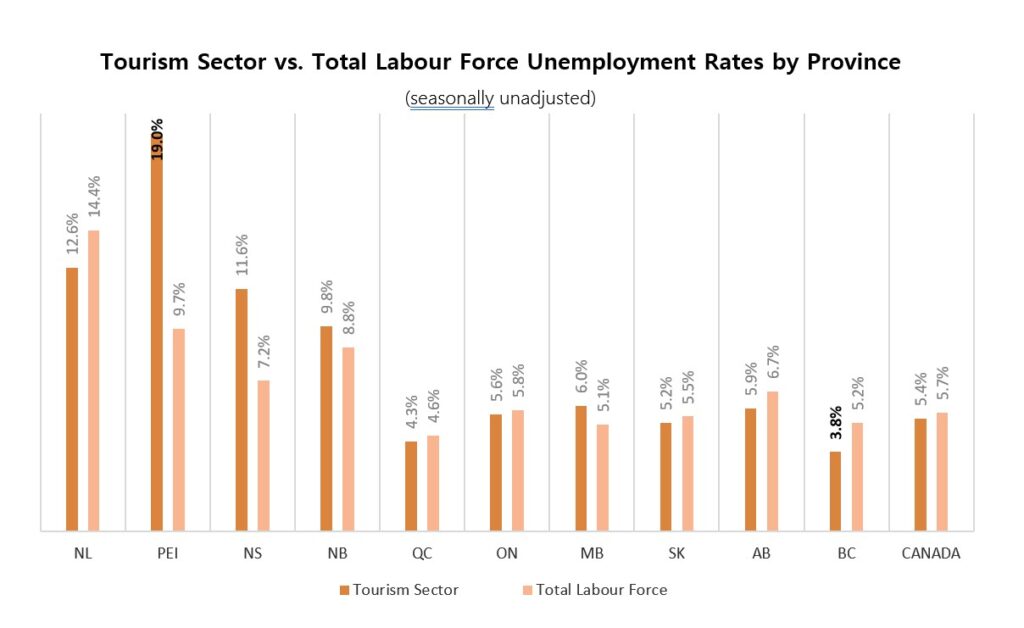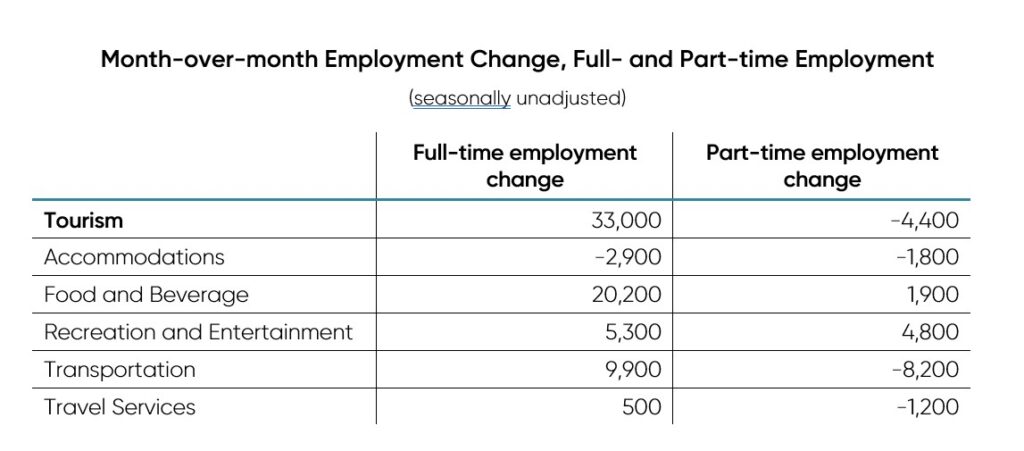Canadian Tourism Labour Market Snapshot
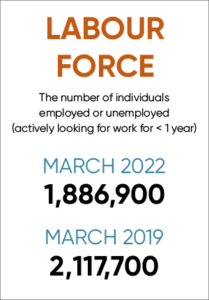 Overall, tourism employment sees an uptick as the sector builds momentum toward recovery in the coming months; however, growth is hindered by employment losses in the accommodations industry and a higher than anticipated unemployment rate in transportation.
Overall, tourism employment sees an uptick as the sector builds momentum toward recovery in the coming months; however, growth is hindered by employment losses in the accommodations industry and a higher than anticipated unemployment rate in transportation.
Labour Force Survey data released for March 2022 showed positive signs toward industry workforce recovery.[1] [2] Canada’s tourism sector had 1,886,900 members in its labour force,[3] hovering slightly above the 1,878,900 participants that made up the labour force as the first significant impacts of the pandemic were felt by the industry that same month in 2020.
However, when considering the robust tourism labour force pre-pandemic (a sizeable 2,117,700 workers in March 2019), it remains clear that labour shortages remain across the country and throughout the tourism industries, though indicators—such as the tourism unemployment rate holding strong in March—reveal that momentum is building toward sector recovery.
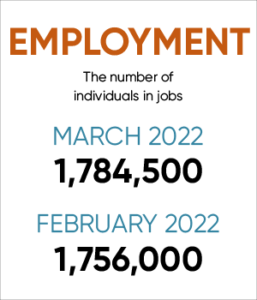 March 2022 Tourism Employment = 9.2% of Canadian Workforce
March 2022 Tourism Employment = 9.2% of Canadian Workforce
Tourism employment comprised 9.2% of the total Canadian workforce for March 2022, hovering at the same level as the previous month (9.1%). Tourism employment increased slightly by 28,500 (or 1.6%) from the previous month. Total employment now sits at 1,784,500 (up from 1,756,000 in February).
Employment numbers have seen significant positive change since March 2021 (mid-pandemic) for all industries except for travel services. While employment in the tourism industries is still behind the levels seen pre-pandemic (March 2019), the travel services workforce remains one of the hardest hit.
For the second straight month, the unemployment rate in the tourism sector stood at 5.4%, which is below Canada’s seasonally unadjusted unemployment rate of 5.7% and 7.6 percentage points lower than the rate reported for tourism in March 2021 (13.0%). All tourism industry groups have reported lower unemployment rates than the same month last year. However, both the accommodations and transportation industries saw higher unemployment rates than last month.
On a provincial basis, tourism unemployment rates ranged from a low of 3.8% in British Columbia to 19.0% in Prince Edward Island. The seasonally unadjusted unemployment rates for tourism in each province, except for Prince Edward Island, Nova Scotia, New Brunswick, and Manitoba, were below the rates reported for the provincial economy.
The employment increase in March is due to increases in full-time employment. Part-time employment in the tourism sector declined slightly (-4,400) after major gains the previous months, while full-time employment increased by 33,000.
Looking Forward
The first two months of 2022 have brought positive indications that employees are returning to tourism occupations. However, the drop in employment in the accommodations industry implies that a high level of volatility remains. Further to this, the suppressed employment numbers in travel services that have persisted throughout the pandemic failed to see positive movement this past month, though external factors, such as the public health measures that had been in place across most parts of the country, are lessening their impact on tourism activity and global research reveals positive signs that travellers are eager to return to tourism destinations.[4]
As the tourism sector looks toward spring 2022, workforce recovery is top of mind for employers and industry stakeholders. As travellers begin to return in the coming months, we should anticipate a heightened need for tourism workers across all five of the key tourism industries.
For a full look at the latest tourism workforce trends, please visit the Tourism Employment Tracker.
[1] SOURCE: Statistics Canada Labour Force Survey, customized tabulations. Based on seasonally unadjusted data data collected for the period of March 20 to March 29, 2022.
[2] As defined by the Canadian Tourism Satellite Account. The NAICS industries included in the tourism sector are those that would cease to exist or operate at a significantly reduced level of activity as a direct result of an absence of tourism.
[3] The labour force is the sum of employed and unemployed persons.
[4] For example, please see the recent report Global Survey on Perspectives of Service Delivery and Traveller Priorities by Twenty31 Consulting Inc.

